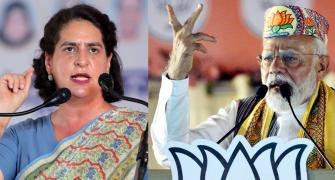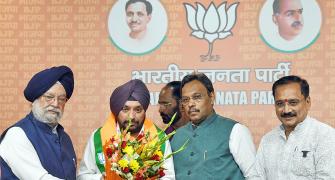"Showing great results in 22 countries of the world, these pictorial warnings on the tobacco products have influenced 42 per cent smokers to quit smoking," says a WHO source.
"But in India, the complexity is very high in the form of different options available in the market and because there is huge difference of taxation between different tobacco products, therefore people will not drastically cut down consumption and may shift to cheaper options, he says."
He emphasized that "like cigarettes, government should raise the prices of gutkas and bidis too" to reduce the consumption of all tobacco products. There might be stringent laws to discourage smoking in public, he says.
"According to a study Global Youth tobacco Survey 2003-06, around 15 per cent of youth in the age group of 13-15 consume tobacco in one or the other forms.
They get influenced by ads," he said adding, that although cigarette have been banned, there is no such restriction on other tobacco products. However, a senior health official is optimistic about the effect of pictorial warning on tobacco products.
"In a country like India, the implementation of pictorial warnings on all tobacco product packs assumes even a greater significance as majority of chewing tobacco users are unaware of its bad effects, poor and illiterate," says B K Prasad, IAS, Joint Secretary of Ministry of Health and Family Welfare.
Making his stand on these pictures having a greater impact if printed along with the written caution, he says, "pictorial warnings make better registry, gives you visual impact along with writing. There will be a scare seeing such pictorial warning."
In India, two-third of people do not smoke and smokers do not have right to cause harm to non-smokers, he says.
The latest round of National Family Health Survey indicates an increasing prevalence of tobacco consumption in India, with 57 per cent males and 10.9 per cent females reportedly consuming tobacco in some form.
Last year had witnessed the implementation of Anti-smoking law in public places, but question to which extent it has arrested smoking remains.
"Any law to begin will take some time.. there might be some initial hiccups. In many Indian states like Chandigarh, Jharkhand, Andhra, Maharastra, Tamil Nadu, the anti smoking drive has seen success," says Prasad .
According to the Health Ministry directive, the tobacco products will have to clearly display a scorpion and lungs as pictorial warning on the front panel of the pack. The picture should cover at least 40 per cent of principal display area of the pack.
Superstar Shah Rukh Khan has often talked publicly about his smoking habit and has done a dozen films where he is portrayed as a smoker. In films like "Don-The Chase Begins", 'Baadshah' and "Devdas", Shahrukh is seen smoking in various scenes.
In Tamil Nadu, a total of 9,648 people have been fined for violating the ban on smoking in public places since October 2 last year. Delhi is at second place with 3,671 people having been fined for smoking in public places.
At present, Chandigarh is the only smoke free city in India. Proposals to make other smoke-free cities include Delhi (by 2009), Chennai (2010), Ahmedabad (2010) and Mumbai (2010).
According to estimates by WHO, 65 per cent of all men in India consume tobacco, with 22 per cent chewing and eight per cent smoking as well as chewing. There has been an increase in the consumption of tobacco among women, with about three per cent smoking 'bidis' or cigarettes and 22 per cent chewing tobacco.
"We hold in our hands the solution to the global tobacco epidemic that threatens the lives of one billion men, women and children during this century," WHO Director General Margaret Chan says in the statement.
The habit of smoking is more concentrated in the higher and lower echelons of society with the middle class much better placed in this scenario, estimates say. According to data available, India is the second largest consumer of tobacco products in the world with bidi being the most common form of tobacco consumption.







